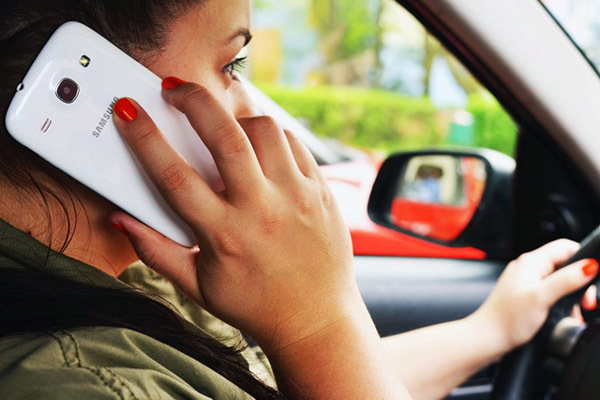Since 2009, the United States Department of Transportation (DOT) and the National Highway Traffic Safety Administration (NHTSA) have been on a quest to “eliminate” distracted driving, which occurs when a driver’s hands, eyes or mind are busy doing something other than driving — usually texting or using a mobile device.
In April 2014, DOT launched its first-ever national advertising and enforcement campaign, which involved television, radio and digital advertisements warning against distracted driving and a nationwide law enforcement clampdown on distracted driving.
While the federal government is cooking up advertising campaigns, the free market is producing actual ways to get people’s phones out of their hands and their eyes on the road.
One example comes from a San Francisco-based startup called Navdy, which just recently raised $6.5 million in seed funding… $2 million less than the DOT has spent on its April 2014 advertising and enforcement campaign alone. Navdy is preparing to release a portable heads-up display next year which could reduce the level of distraction caused by a driver’s mobile phone.
The company received over $1 million in pre-order sales in the first week of the device’s availability. The device connects to the driver’s phone and uses voice and gesture controls to allow drivers’ eyes to stay on the road while using navigation services, taking phone calls and replying to texts.
Innovation through Market Demand
Although NHTSA was established in 1970 to bring about safety improvements in the car industry, it has been the private sector that has consistently innovated on the safety front by responding to consumer demand.
Electronic stability control, for example, has been available in vehicles since 1995, helping to prevent skidding by countering “oversteer” and “understeer” during evasive manuevers. In addition, there have been several new technologies introduced in the market over the past decade to help avoid crashes.
The modern car can now be equipped with blind spot monitoring, lane departure warning, adaptive cruise control and collision mitigation. By the time federal regulations requiring rearview cameras on all cars takes effect in 2018, the DOT forecasts that 73 percent of the cars on the market will already have had such features installed, without the mandate.
Meanwhile, NHTSA requested $828.3 million for its 2014 budget, only 5 percent of which actually goes to vehicle safety research and analysis. NHTSA’s research role involves investigating traffic safety issues and collecting data about car crashes in the Fatality Analysis Reporting System (FARS).
FARS is a helpful resource to monitor the nation’s level of road safety, but other NHTSA functions are not as useful. Over the past two years, around $46 million has been handed out to states through Section 405 Distracted Driving grants to promote “high visibility enforcement” strategies. These enforcement strategies consist of strict anti-distracted driving state laws, public education and highly visible enforcement of state laws.
TANSTAAFL
As with all federal funding, the grants come with strings attached. To receive a grant, a state must have a law which makes texting while driving a primary offense, establishes a minimum $25 fine for first-time violations and increases fines for repeat violations within five years of the previous violation.
Currently, 44 states and the District of Columbia treat texting while driving as a primary offense. However, there is little to no available evidence to suggest federal handouts to states have had any impact on reducing distracted driving.
NHTSA maintains that high-visibility enforcement has reduced impaired driving and increased seat belt use in the past. However, this same sort of strategy has not proven to be as effective in reducing distracted driving.
At best, the evidence on the effectiveness of distracted driving laws is mixed. To select one example, the Insurance Institute for Highway Safety (IIHS) claims that there is no evidence that cell phone use and driving bans reduce crashes.
Furthermore, in a 2008 study, IIHS researchers found that cell phone use while driving in North Carolina actually increased among teens, after a ban was put in place for drivers under the age of 18.
The way to achieve more innovation is not to overburden the market with regulation, and NHTSA should keep this in mind as it crafts guidelines for integrated electronic devices for cars, like Navdy’s device, and other safety features not yet invented.
Brian Deignan ([email protected]) is a Policy Research Intern for the Reason Foundation. Used with permission of Reason’s Out of Control Policy Blog, at http://www.reason.org/blog/
Internet Info:
“Short-term Effects of a Teenage Driver Cell Phone Restriction,” Robert D. Foss, University of North Carolina Highway Safety Research Center: http://heartland.org/policy-documents/short-term-effects-teenage-driver-cell-phone-restriction



